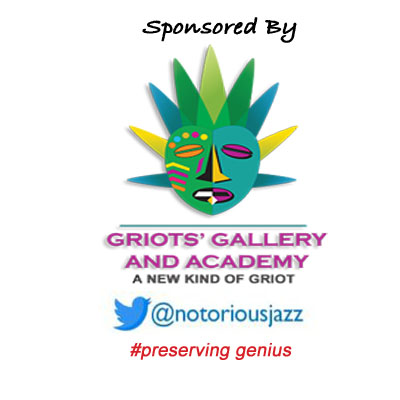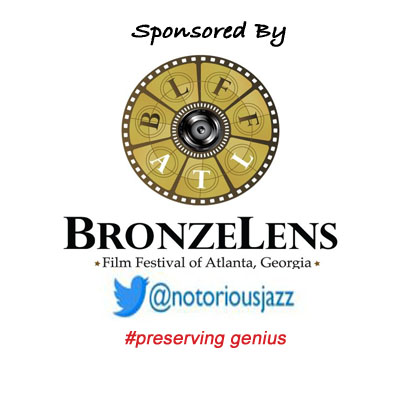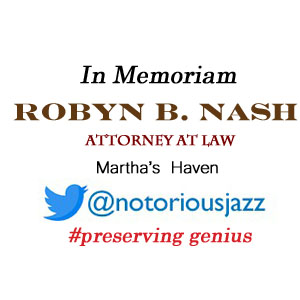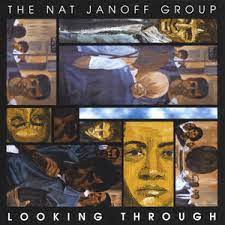
Daily Dose Of Jazz…
Nat Janoff was born on July 13, 1970 in New Jersey and began his musical education on the piano before switching to bass. After hearing Eddie Van Halen he settled on the guitar. Growing up in the 80’s his musical interests were all things rock and metal and soon earned a reputation for being one of the best shred guitarist in the area. However, seeking a platform to improvise longer than a standard rock riff led him to jazz and hearing the Mahavishnu Orchestra’s Birds of Fire for the first time.
He pursued jazz earning his Bachelor of Music degree in Jazz Performance from William Paterson University in 1996 and set to work forging his own musical path.
Recording his debut album, Looking Through, he enlisted the talents of electric bassist, Matthew Garrison and drummer Gene Lake, that showcased him as a player and a composer. Two more albums as a leader followed, a live acoustic date and a studio session, then contributing to the ESC tribute album Mahavishnu Redefined II.
In addition to playing with his own groups, Janoff has performed with Joe, David “Pic” Conley, Norman Simmons and drummer Victor Jones’ group Culturversy, Debelah Morgan, and Roland Clark.
Guitarist, composer and educator Nat Janoff teaches guitar privately, has been a guest instructor at the annual William Paterson University summer jazz camp, and continues to perform and record.
More Posts: bandleader,composer,educator,guitar,history,instrumental,jazz,music
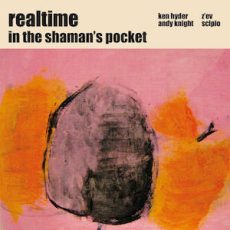
Daily Dose Of Jazz…
Ken Hyder was born June 29, 1946 in Dundee, Scotland. He began playing jazz in his native Scotland before moving south to London, England where he studied under John Stevens and played at the Little Theatre Club at Garrick Yard, an avant garde haunt, run by Stevens.
Over the course of a 40 year career Hyder has worked with and recorded with Elton Dean, Chris Biscoe, Tim Hodgkinson, Paul Rogers, Maggie Nicols, Don Paterson and Frankie Armstrong, just to name a few in a long list.
He composes music and has produced more than three dozen albums of original material. In 1970, Hyder formed Talisker and during the decade began moving away from jazz and into collaborations with musicians from different musical backgrounds, including Irish, South African and South American players. This led him to explore spiritual aspects of music with spiritual practitioners like Tibetan and Japanese Buddhist monks, and Siberian shamans.
As an author he has published three e-books based on shamanism in Siberia, cyber crime and cyber terrorism, and a memoir. Jazz fusion drummer and percussionist Ken Hyder, best known for combining folk, ethnic and Celtic music with jazz, continues to perform and record.
More Posts: bandleader,drums,history,instrumental,jazz,music,percussion
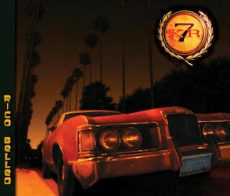
Daily Dose Of Jazz…
Rico Belled was born in the Netherlands on May 9, 1970 to Spanish/Swiss parents. Growing up in a multicultural environment, with a pianist father, he was exposed to many styles of music. He started playing piano at age 11, exploring everything from classical music to jazz. At 15 he started playing gigs with local bands doing pop and blues, while slowly getting interested in the bass, which he started practicing at age 17.
In 1989, while studying electrical engineering at the TU Delft, Rico met Roy Cruz in The Hague and joined his weekly Sunday night band at De Pater, exploring the world of Funk and Jazz playing Fender Rhodes. During these sessions they broke down all stylistic walls from playing Weather Report tunes to full on James Brown Funk, featuring as many as 10 people on the little stage. Here he got an education in the art of jamming.
Realizing music was his passion, in 1992 Belled gave up engineering and moved to Los Angeles, California and attended the Musicians Institute in Hollywood. Post graduation he was already playing with a few different groups in the Los Angeles area and in the following years made a name for himself as a bass and keyboard session musician. His breakthrough came when he joined Wrecking Crew pianist Don Randi and the house band at the Baked Potato in 1994. A two year residency offered the opportunity to lead his own group performing his original music at the club.
This led to him performing and recording with Marc Antoine, The Dan Band, Sound Assembly, Jeff Robinson, Leslie Paula’s Latin Soul Band, Liza Minelli, Chris Standring, Scott Grimes, Keiko Matsui and many others. He has co-written and published music with Mindi Abair and Jeff Robinson. All this led to him being asked to join the Rippingtons, starting with recording the album ‘Modern Art’, for which he received a Grammy Nomination in 2010. Still a member, bassist Rico Belled remains one of the top bassists in Los Angeles, known for his deep groove and versatility, staying busy live and in the studio.
More Posts: bandleader,bass,composer,history,instrumental,jazz,music

Daily Dose Of Jazz…
Kenn Smith was born Kenneth Lamont Smith on April 27, 1962 in Chicago, Illinois.
As a child of the 60s and Seventies living on the WestSide of his hometownhe first heard the sounds of Motown, Soul, Funk, Country, Jazz and Rock. His school was shows like Hee Haw and Midnight Special, his parents’ record collection, and a neighborhood filled with amateur and professional musicians.
When the family moved to the SouthSide in 1975, Smith began his guitar studies at age 13 with a visit to the local music store purchasing two Mel Bay books. Three years later the family moved to the western suburbs of Maywood, Illinois. At 16 he began classical guitar studies with guitarist Bruce Walters, and later continued studies at Jack Cecchini Studio.
While attending Proviso East High School, he played electric and classical guitar as well as timpani in the Proviso Township Orchestra, electric guitar and bass in the Proviso East High School jazz band, where he received the Louis Armstrong Award for Outstanding Jazz Improvisation during his senior year.
1982 saw Kenn beginning his career teaching guitar at Robinson’s Music Academy in Maywood, as well as performing with local funk and fusion bands. This he did while attending Columbia College of Chicago, studying music management and production. In 1987 he enrolled at the American Conservatory of Music where he studied jazz guitar and composition. In between those years of teaching, performing and study, he became an avid fan of progressive rock and fusion, developing skills as a guitarist, bassist and composer.
In 1986, he began his career as a freelance guitarist and bassist, performing on Chicago’s jazz, blues and rock scene. But it wasn’t till 1989 his professional career took off, working as a guitarist at the Chicago Cotton Club. It was here he later formed his first jazz trio and opened for jazz greats Shirley Horn, Stanley Turrentine, Freddy Cole, and Art Porter. As a jazz side man he played with other jazz greats, Jodie Christian, Guy Fricano, Johnny Frigo, Bobby Broom, Najee and many others.
He would go on tour with the Chi-Lites, start his own label Kenn Smith Music, has written, produced and recorded eight albums, as well as authored an instruction book for electric bass and numerous articles for online magazines such as Mel Bay Bass Sessions, and Bass Musician Magazine.
Guitarist, bassist, composer, educator and journalist Kenn Smith, who is well versed in many styles of music, continues to explore his music.
More Posts: author,bass,composer,educator,guitar,history,instrumental,jazz,music
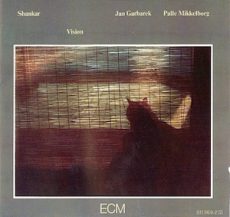
Daily Dose Of Jazz…
Lakshminarayana Shankar was born on April 26,1950 in Madras, India and raised in Ceylon, now Sri Lanka. His father was a violinist and singer who worked as a teacher at the Jaffna College of Music. The young boy learned to play the violin and first performed in public in a Ceylonese temple at the age of seven.
In 1969 he traveled to the United States where he studied ethnomusicology at Wesleyan University. While attending college at Wesleyan University, he met jazz musicians like Ornette Coleman, Jimmy Garrison, and John McLaughlin. With McLaughlin, Shankar founded the group Shakti in 1975, one of the early groups in which Eastern and Western musical traditions met. They released three albums between 1975 and 1977 titled Shakti, A Handful of Beauty, and Natural Elements.
Post performing with various Indian singers for several years, Shankar founded a trio with his brothers, L. Vaidyanathan and L. Subramaniam and they performed throughout India. After the band dissolved, Shankar was a violinist with Frank Zappa for a short time, and then founded the group The Epidemics and released a number of albums as a band leader.
Collaborating with Peter Gabriel, he wrote the soundtrack for the film The Last Temptation of Christ, for which he received a Grammy Award. In the following years, Shankar worked on several of Gabriel’s albums. Since 1996, he has been working with his niece, the violinist Gingger Shankar as the duo Shankar & Gingger.
He has performed in trio with trumpeter Palle Mikkelborg and saxophonist Jan Garbarek and has stretched with Elton John, Eric Clapton, Phil Collins, Bruce Springsteen, Van Morrison, Yoko Ono, Stewart Copeland, John Waite, Charly García, Steve Vai, Ginger Baker, Nils Lofgren, Jonathan Davis, The SFA, and Sting.
Better known as L. Shankar, Shankar and Shenkar, violinist, singer and composer Lakshminarayana Shankar continues to perform among other endeavors.
More Posts: bandleader,composer,history,instrumental,jazz,music,violin,vocal


